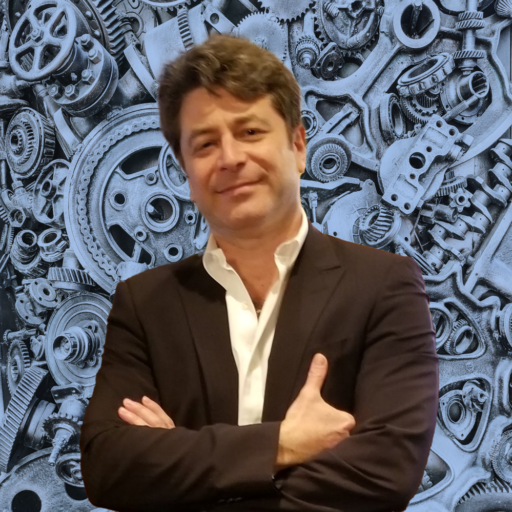New Systems Engineering: V-Model in the Real World

New Systems Engineering: V-Model in the Real World
Introduction: When Philosophy Meets Reality
Overall, in Systems Engineering, the V-Model is more than a diagram. It is a philosophy of discipline: define commitments on the left, then prove them on the right. Across this series, we have seen how it provides clarity in requirements, early detection of risks, and lifecycle assurance beyond launch.
Yet in the real world, discipline collides with pressure. Executives demand faster launches, programs compete for limited resources, and corporate politics often reward appearances of progress rather than proof of readiness. Moreover, suppliers push responsibility down the chain, while regulators sometimes enforce compliance through paperwork rather than rigorous evidence.
Hence, this final part of the series examines how the V-Model survives under those conditions. It explores the forces of politics, timelines, and design drift—and shows how engineering leaders can defend discipline when shortcuts threaten to erode it. Therefore, the payoff is not just technical success but organizational integrity: a culture that chooses reality over appearances, and evidence over assumption.
Political Pressures in Product Development
Politics is one of the strongest forces that can distort disciplined Systems Engineering. Inside an organization, leaders set cost targets and marketing promises that often conflict with safety margins or engineering evidence. In addition, internal politics may reward teams for passing reviews on paper rather than proving readiness with data.
Furthermore, supplier politics introduces its own pressures. OEMs may push responsibility down to Tier I suppliers, while Tier I suppliers often transfer risks further to Tier II or smaller vendors. Each handoff creates room for requirements to weaken, interfaces to drift, and accountability to blur.
External politics complicates the picture even more. Regulators sometimes enforce compliance through documents instead of full evidence. Meanwhile, governments may adjust standards under public or industry pressure, encouraging organizations to meet the minimum instead of demonstrating rigorous proof.
For example, the automotive emissions scandals of the past decade revealed how political pressure to meet aggressive targets—combined with weak oversight—encouraged shortcuts in validation. Instead of demonstrating compliance across all conditions, systems were tuned narrowly to pass regulatory tests. This was not a failure of engineering tools but of discipline under political influence.
Consequently, politics by itself does not break the V-Model. The real danger appears when compromises are made silently, without transparency or formal re-validation. By facing these pressures openly, and by documenting every trade-off as part of the requirements and validation loop, leaders can preserve the integrity of the V-Model—even in a political environment.
Timelines and the Illusion of Speed
Time pressure is a constant in product development. Executives often believe that skipping steps in Systems Engineering will accelerate schedules. In reality, deferring requirements, rushing integration, or cutting validation work rarely saves time. Instead, it creates fragile progress that collapses during testing or, worse, in the field.
Moreover, one of the most common shortcuts is the assumption that carry-over content automatically reduces work. A subsystem proven in one program accept the “the reuse” for another without re-verification. Although this appears efficient, it often leads to hidden incompatibilities with new architectures, regulatory updates, or performance targets.
The industry has seen the cost of this illusion. For instance, rushed airbag and sensor integrations have led to delayed launches, large recalls, and significant warranty costs. In these cases, the time “saved” early in development was far outweighed by the cost and disruption of late rework.
Therefore, timelines themselves do not break the V-Model. The real problem emerges when leaders treat Systems Engineering as optional under schedule pressure. Programs that build in staged verification checkpoints may appear slower at first, but they avoid the spirals of rework, escalation, and loss of customer trust that follow shortcuts.
Design Drift — When the Left and Right Arms Separate
Design drift occurs when commitments defined on the left side of the V-Model fail to align with the evidence produced on the right. In principle, every requirement should have a matching verification or validation activity. In practice, late changes, weak interfaces, or missing traceability allow the two sides to separate.
Several factors commonly drive drift:
- Interfaces modified without re-verification.
- Supplier substitutions made under cost or schedule pressure.
- Late requirement changes that bypass validation.
When drift occurs, subsystems may meet their own specifications yet fail when integrated into the larger system. The result is rework, warranty spikes, and in severe cases, safety incidents.
The industry has witnessed this with advanced driver-assistance systems (ADAS). Some vehicles passed subsystem-level tests for sensors and ECUs, but during full integration, mismatches in timing and signal interpretation caused features such as lane-keeping or emergency braking to underperform. Each subsystem was “verified,” yet the system as a whole failed its intended function — a textbook case of design drift.
Ultimately, the cure is discipline. The V-Model only works if every change flows back into requirements, interfaces, and re-validation. Otherwise, programs end up building to two different visions of “the same” product: one defined on the left, and another delivered on the right.
Protecting Discipline in the Real World
The V-Model provides structure, but discipline must be actively defended when politics, timelines, and design drift apply pressure. Leaders set the tone by insisting on clarity, ownership, and accountability. Without this, shortcuts become normalized, and engineering rigor erodes.
Practical defenses include:
- Clear ownership of requirements – Every commitment must have a responsible owner who is accountable for verification and validation results.
- “No test, no ship” rules – A function is never released without documented proof of performance.
- Formal change control with a Plan of Action – Every late requirement or supplier substitution must not only trigger re-validation but also be tied to a defined tactical plan. This plan of action — developed and approved after the Statement of Requirements (SOR) is complete — provides a scheduled sequence of activities, deliverables, and responsibilities. It ensures that stakeholders know exactly how changes will be validated, by whom, and within what timeframe. Importantly, the plan remains available and active for the entire preproduction period.
- Escalation paths – Unresolved TBDs and interface gaps must reach decision-makers quickly, rather than remaining hidden in program teams.
- Preproduction Readiness Reviews – Additional structured checkpoints where the tactical plan is revisited, ensuring progress on re-validation is transparent before launch decisions are made.
The industry offers clear lessons. For example, in some past launches of infotainment and telematics systems, software was pushed into production without full validation under real-world network conditions. Under schedule pressure, executives accepted “demonstrations” instead of evidence. The outcome was predictable: recalls, costly service updates, and damaged trust.
Therefore, protecting the V-Model in practice is as much a leadership challenge as it is a technical one. Engineers can define requirements and build tests, but only leadership discipline ensures that no compromise slips through without evidence and accountability.
Closing Thoughts: The V-Model as a Leadership Tool
The V-Model is not a drawing for training slides, nor a relic of traditional process thinking. It is a leadership tool that demands clarity, accountability, and courage in the face of pressure. When politics distort priorities, timelines push teams toward shortcuts, or design drift separates intent from execution, the V-Model provides a structure to bring reality back into focus.
Leadership matters because Systems Engineering is never neutral. Either leaders defend discipline with clear ownership, formal change control, and no-test/no-ship rules, or they allow compromises to accumulate quietly until the program falters. In this sense, the V-Model is as much about organizational integrity as it is about engineering rigor.
Industry history makes the stakes clear. Delayed launches tied to integration failures, emissions scandals tied to weak oversight, and warranty spikes tied to rushed updates all show what happens when the V-Model is ignored. Conversely, programs that enforce early alignment, re-validation of every change, and transparent accountability consistently deliver safer, more reliable vehicles on schedule.
From an Objectivist perspective, this is the difference between facing reality and evading it. The V-Model embodies metaphysical clarity — defining exactly what the system is — and epistemological rigor — proving how we know it works. When these principles guide leadership decisions, the V-Model becomes more than an engineering method; it becomes a philosophy of action.
As this series closes, the lesson is simple: the concept of V-Model is alive only when leaders keep it alive. It bridges philosophy and practice, aligning purpose, process, and proof across the entire lifecycle. By choosing clarity over ambiguity, and evidence over appearances, organizations can resist politics, timelines, and drift — and deliver systems that work in reality, not just on paper.
References
-
INCOSE Systems Engineering Handbook – Overview of systems engineering principles, including V-Model context
www.incose.org/products-and-publications/se-handbook -
ISO/IEC/IEEE 15288: System Life Cycle Processes – International standard defining system development and verification processes
www.iso.org/standard/63711.html - 3. ISO 26262: Road Vehicles – Functional Safety – Automotive functional safety standard where the V-Model is often applied
www.iso.org/standard/43464.html
References to Systems Engineering Series:
- What V-Model Really Means in Automotive Systems Engineering: https://georgedallen.com/what-v-model-really-means-in-automotive-systems-engineering/
- Requirement Cascades and the Illusion of Readiness: https://georgedallen.com/new-systems-engineering-avoiding-the-illusion-of-readiness/
- Bridging the Center – Integration as Reality Check: https://georgedallen.com/new-systems-engineering-v-model-supply-chain-alignment/
- Why the Right Side Fails – Verification Isn’t Testing: https://georgedallen.com/new-systems-engineering-v-model-risk-management/
- The Loop Within the V – Feedback and Continuous Learning: https://georgedallen.com/new-systems-engineering-the-loop-within-the-v-lifecycle-assurance/
- V-Model in the Real World – Politics, Timelines, and Design Drift: https://georgedallen.com/new-systems-engineering-v-model-in-the-real-world/ <—You are here
Systems Engineering References
About George D. Allen Consulting:
George D. Allen Consulting is a pioneering force in driving engineering excellence and innovation within the automotive industry. Led by George D. Allen, a seasoned engineering specialist with an illustrious background in occupant safety and systems development, the company is committed to revolutionizing engineering practices for businesses on the cusp of automotive technology. With a proven track record, tailored solutions, and an unwavering commitment to staying ahead of industry trends, George D. Allen Consulting partners with organizations to create a safer, smarter, and more innovative future. For more information, visit www.GeorgeDAllen.com.
Contact:
Website: www.GeorgeDAllen.com
Email: inquiry@GeorgeDAllen.com
Phone: 248-509-4188
Unlock your engineering potential today. Connect with us for a consultation.

